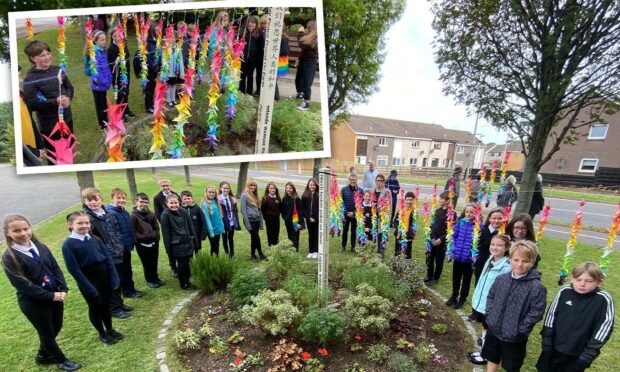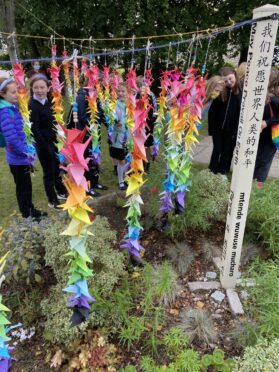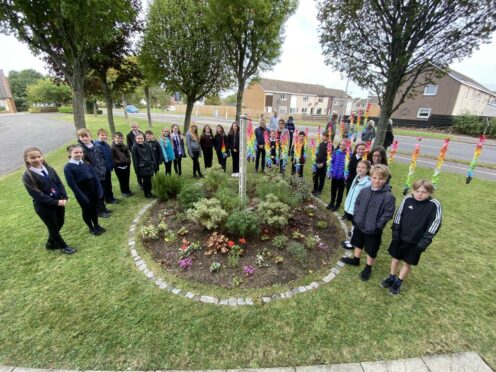Pupils from two Fife schools have come together to create a poignant display symbolising peace featuring more than 750 origami cranes.
The brightly coloured paper cranes — the bird symbol of peace — were made by pupils from Both Donibristle and Dalgety Bay Primary Schools.
They were produced by P7 pupils as part of a project to mark the annual International Day of Peace.
All of the completed cranes were strung together to form an eye catching display within the Dalgety Bay Parish Church’s peace garden.
The impressive display was unveiled by the pupils, along with help from members of Dalgety Community Trust and the church, to coincide with the annual peace event.
And in addition to being displayed locally, some of the origami birds will soon be on a 5,600 mile journey to Japan.
There, the folded paper birds will join others from around the globe to be added to a special display in Hiroshima’s Peace Garden.
International Day of Peace, also known as World Peace Day, is celebrated annually on September 21 promoting the ideals of peace around the world.
The origami cranes were originally popularised by the story of Sadako Sasaki, a Japanese girl who was exposed to radiation form the atomic bombing of Hiroshima during the Second World War.
Sadako developed leukaemia and at the age of 12 after spending time in hospital, began making the paper cranes.
With a wish to get better, she was inspired by the senbazuru legend that said that a prayer would be granted to those who folded 1,000 cranes.
Sadly, Sadako passed away but her story spread around the world.
The Children’s Peace Monument was erected in Hiroshima Peace Memorial Park a year after the youngster’s death and features a bronze statue of her holding a golden crane.
Every year, paper cranes made by children from around the world are used to decorate the peace memorial.
This year, the display will include those made by children from the two Dalgety Bay schools.
Phil Evans, the Dalgety Community Trust chairman, was quick to praise the efforts of the children as they were unveiled.
He said: “It’s been a fantastic effort from all the children.
“Not only have they learned how to fold the cranes much better than I can but have also learned a little about why they are made and what they symbolise.”
Dalgety Bay Parish Church’s assistant minister, Andrea Fraser, added: “It’s a wonderful gesture by the school children that fits perfectly within the surrounds of our peace garden.
“It’s also amazing to know that some of these will soon go on a journey and eventually be displayed at the memorial at Hiroshima.”


